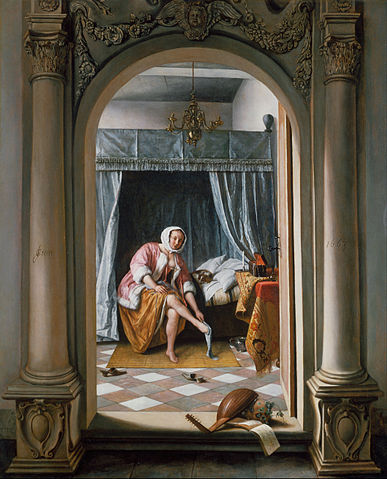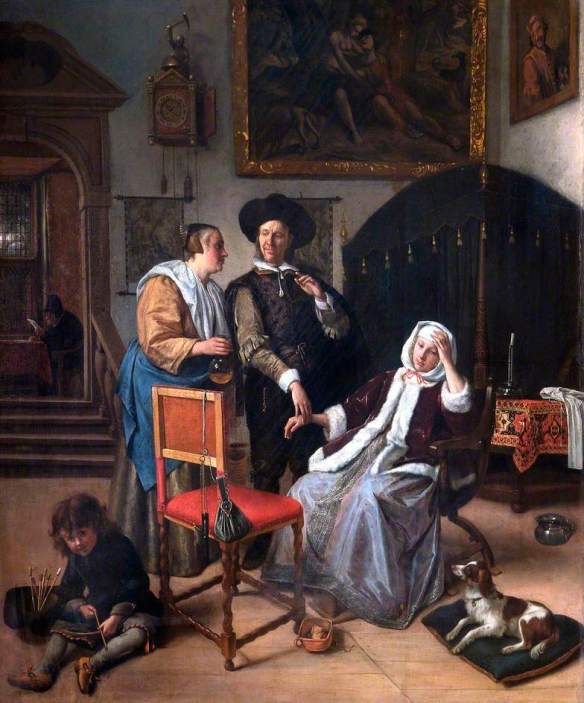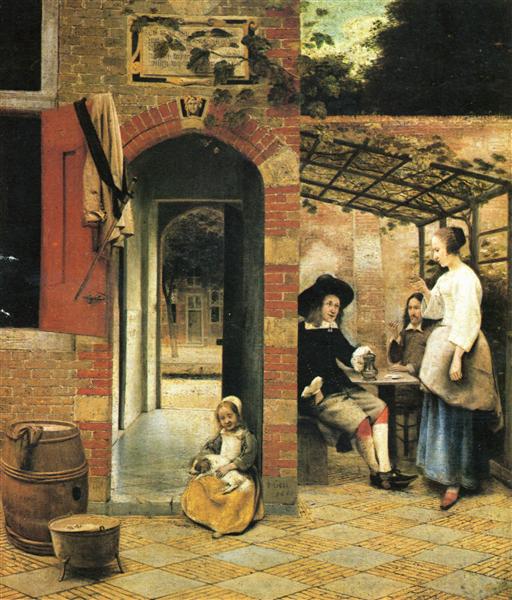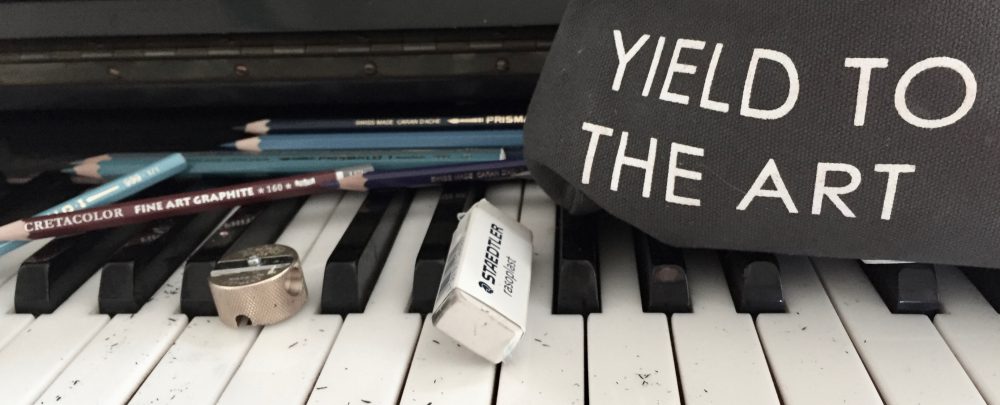Research the work of the Dutch realist genre painters and choose two or three paintings that particularly appeal to you. Find out what you can about the artist and their intentions. Look at the devices employed by the painter to draw the viewer into the experience of the occupants of the room.
In the book The Age of Rembrandt and Vermeer, it’s the works of Jan Steen that get my attention, mainly for their humour, perhaps absurdity. An artist of the C17th, Steen was working at a time when the move against the Catholic Church had all but put an end to paintings of religious, even mythological or historical subject. The focus was on contemporary life, though as with Dutch still life there are no shortages of signs and symbols to give us an insight into the image but also as a reminder of our own life.
In both The Morning Toilet and The Physician’s Visit, the scene is full of detail, giving us clues as to what we’re looking at. In both objects in the foreground feel as if they’re within reaching distance of us. Objects disappear off the side of the frame, giving the sense that if we take a step forward and in to the room we’ll see more.

Jan Steen, The Morning Toilet, 1663
In The Morning Toilet there is a clear sense of looking into a brightly lit room from a darker hallway. The woman is brightly lit against the darker confines of the curtained bed. Above the bed we see the ceiling and shadowy corners of the room. The tiled floor helps with the sense of perspective as does the bedside mat. Between us and the woman lie a trail of objects, leading us in or out of the space: shoes, a lute, skull and book – the pages of which tip over the step in the immediate foreground.

Jan Steen, The Physician’s Visit
We are close to the action in The Physician’s Visit, we would have to lift our head or turn to see the whole room. Though the sense of light direction is not as obvious as in The Morning Toilet, there is a distinction between where the main action occurs and where the woman’s husband (?) sits reading in the background. This is a snapshot, a moment in time, as the pulse is taken, the boy takes aim with his arrow, the doctors and maid cast a conspiratorial glance at each other.
For Pieter de Hooch the structure of the space has equal, if not more importance to the overall image than what fills it. As JM Nash describes de Hooch: “His art depended on the manipulations of space. At best he was a wonderful inventor of spacial effects. Nature and the laws of optical perspective were at his command. Planes, intervals, doors, shutters, corridors obey his will. Light calls at his command.” (Nash, 1973)

Pieter de Hoogh, The Courtyard of a House in Delft (1658)
We see this clearly in The Courtyard of a House in Delft in which the lines of perspective can almost be seen leading away to the imaginary point on the horizon. Again, there is the immediate foreground of barrels and cooking pot within the courtyard, the brick tiles, the darkened corridor, arched entrance and door ajar to the bright street beyond. To the left, a shutter opens towards us revealing the dark, unlit interior.
Bibliography
Nash, J. (1973). The age of Rembrandt and Vermeer. London: Phaidon.
